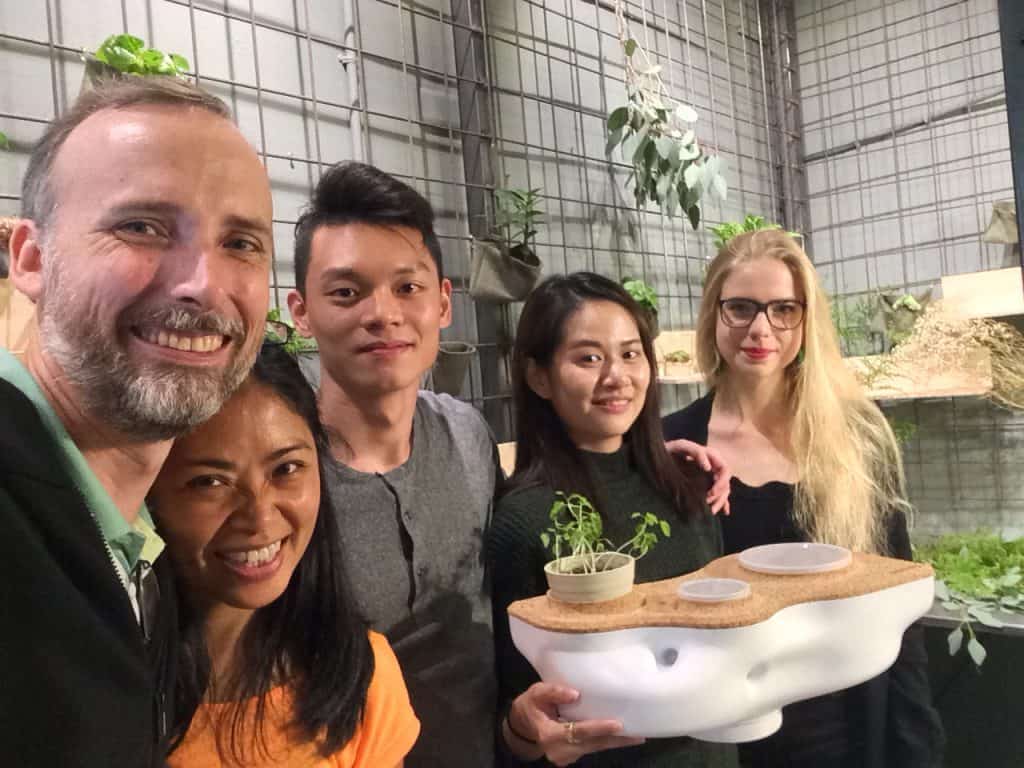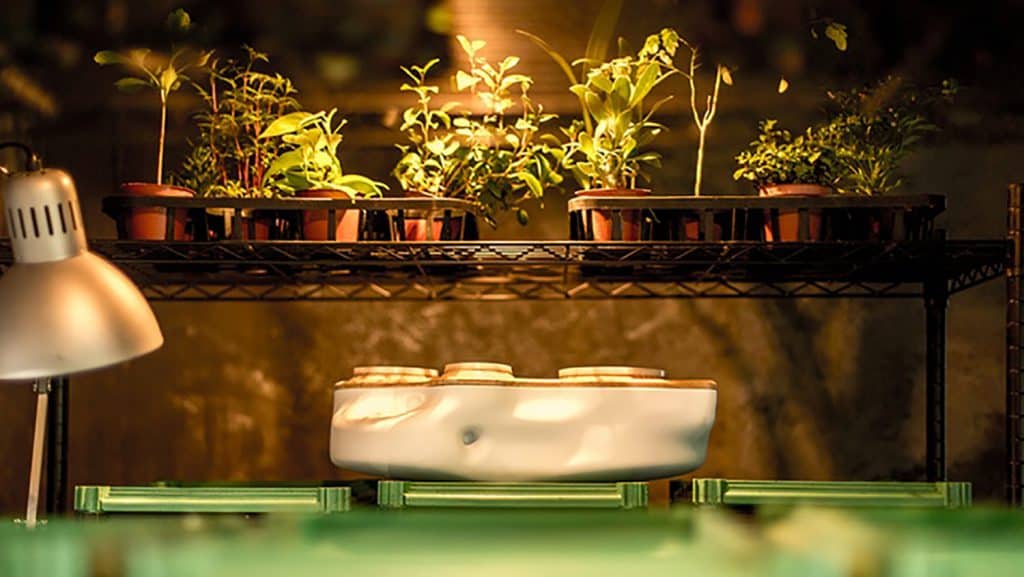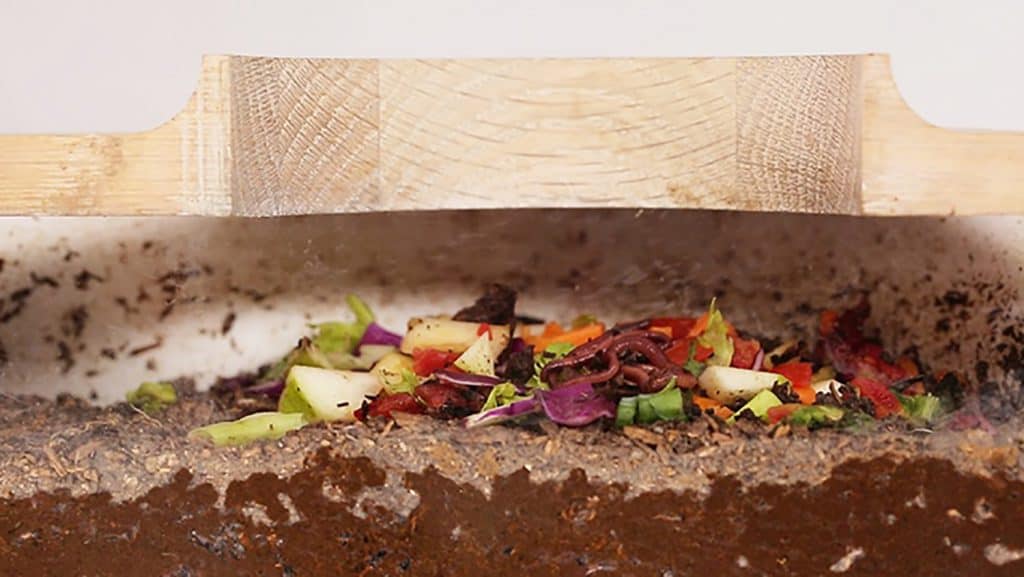The BIOVESSEL Tabletop Composter is ideal in a typical urban kitchen. When you have finished cooking, you will have a pile of bean ends, carrot tops and other vegetable cuttings put aside. Or more likely dumped in a plastic bag tied up to put into a bin. Wouldn’t it be better to compost that waste?
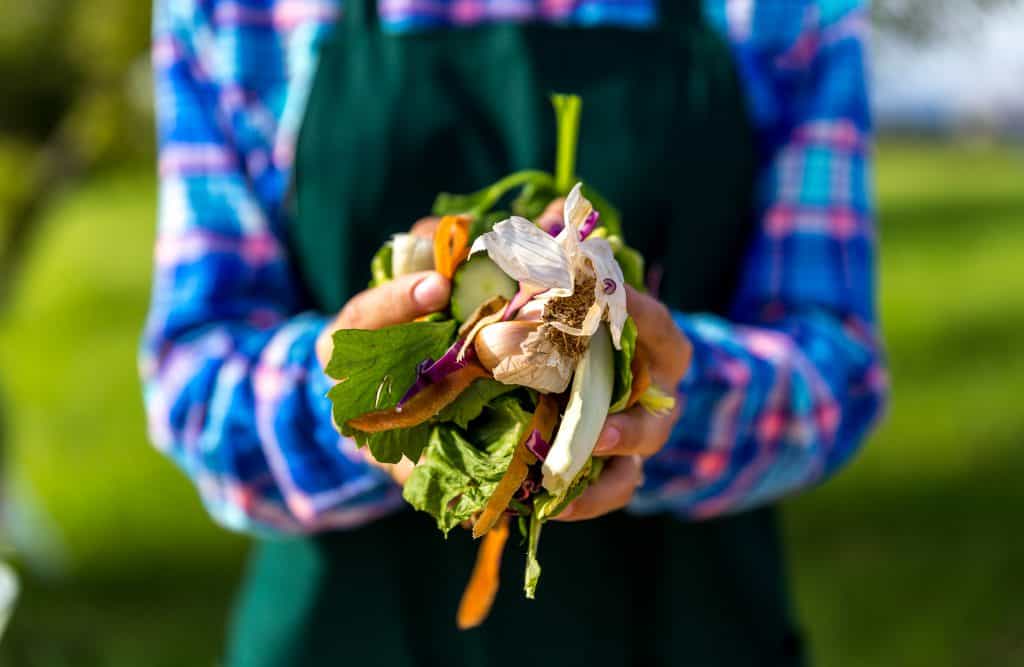
How can I make compost at home?
After all, there is virtually no room to put in a composter!
They are dirty, take up space, need to be kept outside. Not only that but they stink right?!!
Well perhaps not.. Enter the Biovessel by Bionicraft?
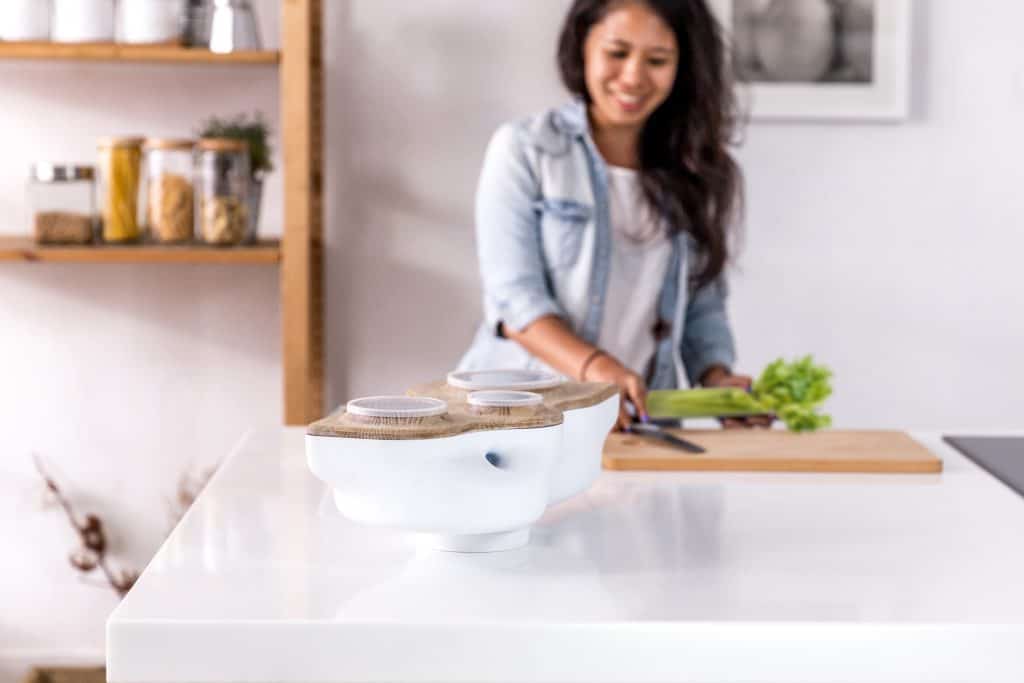
BIOVESSEL is advertised as “An Ecosystem Powered by Food Waste”.
This kickstarter project which managed to raise more than US$60,000 to get their project off the ground, aims to provide a solution to these problems.
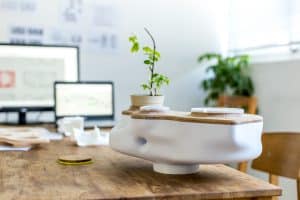
But before we get ahead of ourselves, is it really necessary to start composting in our homes? Especially when there is limited space and we have such busy lives.
Given the worldwide awareness of Global Warming and the prevalence of chemicals in our food, perhaps we could consider composting as a small way to contribute our bit to helping the world.
Landfill is Dangerous
If you are not a gardener you probably won’t be too interested in providing great food and nutrients to any plants you might grow. Thus composting might seem quite pointless, too much work to set up and even more to maintain. BUT, did you know that the sealed up garbage that gets put into landfill is causing huge problems?

In fact this rubbish probably won’t break down for at least several years. That’s right several years! And it’s a shame, because under the right conditions it would decompose in a matter of days or weeks.
The garbage when it’s sealed up like that, is isolated from nature’s best decomposers. Of course it does decompose eventually but in the process it produces greenhouse gasses which negatively affect the environment.
In fact, according to the US Environmental Protection Agency, Landfill Gas accounts for 17.7% of all U.S. Methane emissions. (https://www.livescience.com/32786-what-happens-inside-a-landfill.html, https://www.ghgonline.org/methanelandfill.htm, https://danimerscientific.com/making-more-compostable-trash-can-help-solve-global-energy-problems/, https://www.eesi.org/papers/view/fact-sheet-landfill-methane)
Composting Helps the Environment
Composting reduces these bad effects by taking the plant materials and breaking them down into nutrients. It then releases them back into the soil so they can be used by plants again.
This is great because then we recycle our waste and don’t need to use artificial fertilizers to replenish the soil. It is ready to grow abundant healthy crops.
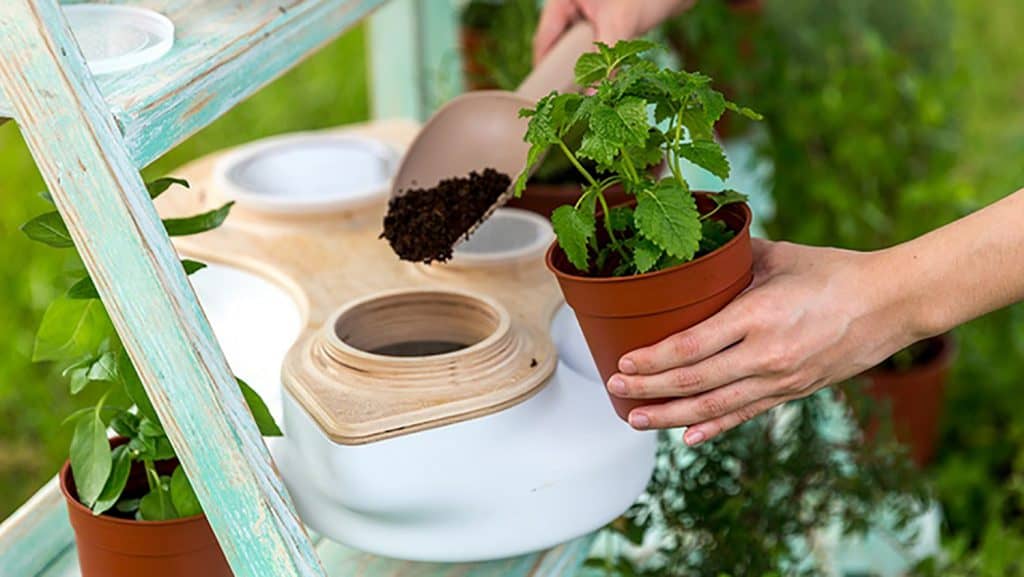
So let’s talk about indoor composting. If you have time, and a very small budget then you might want to consider another option, perhaps a DIY solution on Youtube.
However, if you are looking for a space optimised solution that you can proudly show off in your kitchen or living room. One which does not have an odour, and is engineered specifically to provide the ideal environment for worms.
Then you want to take a serious look at the new Bionicraft’s Biovessel Indoor Composter.
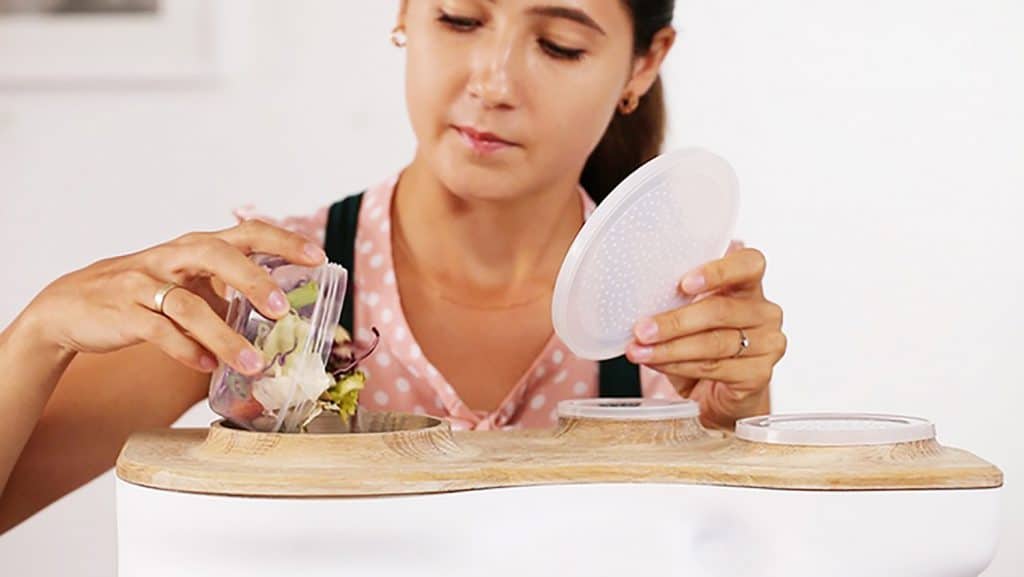
Attractive, but practical
The Biovessel first caught our eye when we saw it advertised on a kick-starter project. It looked attractive and had great science to backup what was being offered.
Not only that, it had managed to raise a large amount of money on Kickstarter (amazing for a small company just getting started). We were excited and intrigued, and decided to see them while visiting Taiwan.

The B402 Biolab is located near TAIPEI 101 (formerly known as the Taipei World Financial Center). And we had the pleasure of meeting a few members of the small team behind the innovative desktop composter.
They are a passionate motivated group of people that are sincerely trying to make a difference in the world.
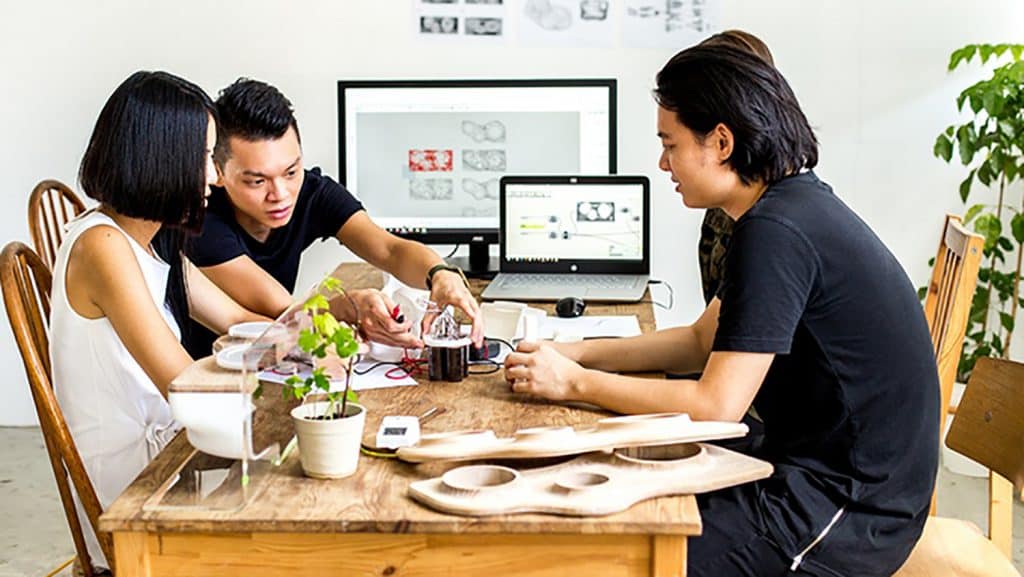
Their group consists of biologists, designers, and landscape architects, and although they do not all have the same background. They are all passionate about one thing.
Helping the environment!
Their office is set up somewhat like a small cave with experiments going on in the back and a work table in the middle.
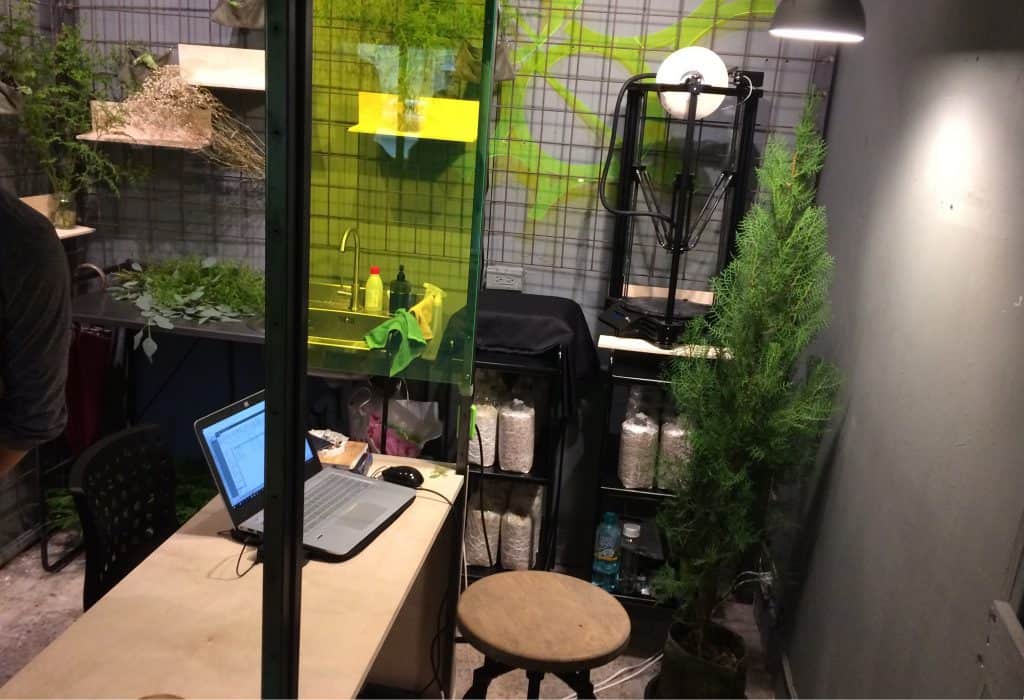
The idea for this project came about while thinking how small families could produce their own compost inside the limited space of their home.
There are thousands of families around the world living in apartments, and homes with no outdoors. This sort of equipment is perfect for the modern day urban gardener. They want an effective way to recycle and provide good organic food for their plants, in a limited space.
Of course it is also fantastic for those parents with children. Who want to educate them about the life cycle and how nature works.
How does it work?
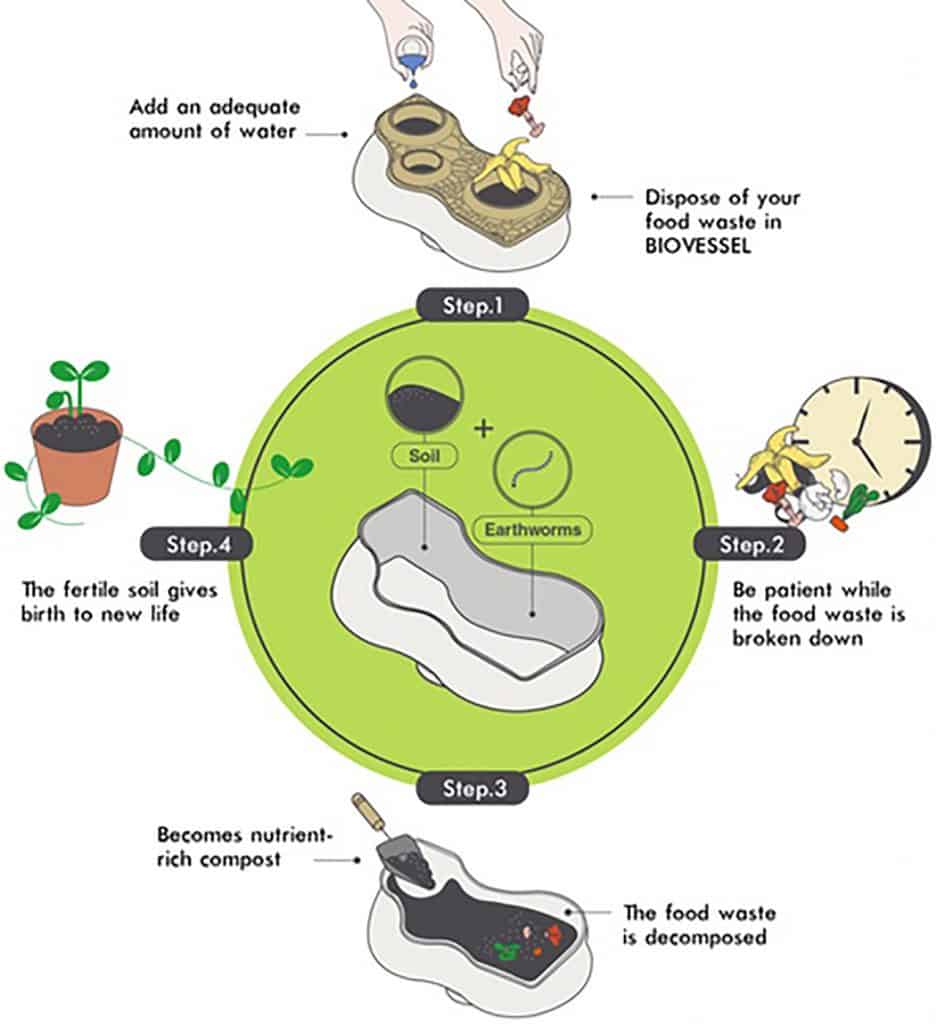
The Bionicraft biovessel has been specially engineered using computer modelling techniques and lots of in-house testing.
It maximises the efficiency of composting plant matter and special red worms are used that are popularly known for their efficiency at decomposing waste. The particular shape of the Biovessel was designed to enhance and utilise the worms’ natural movement while composting.
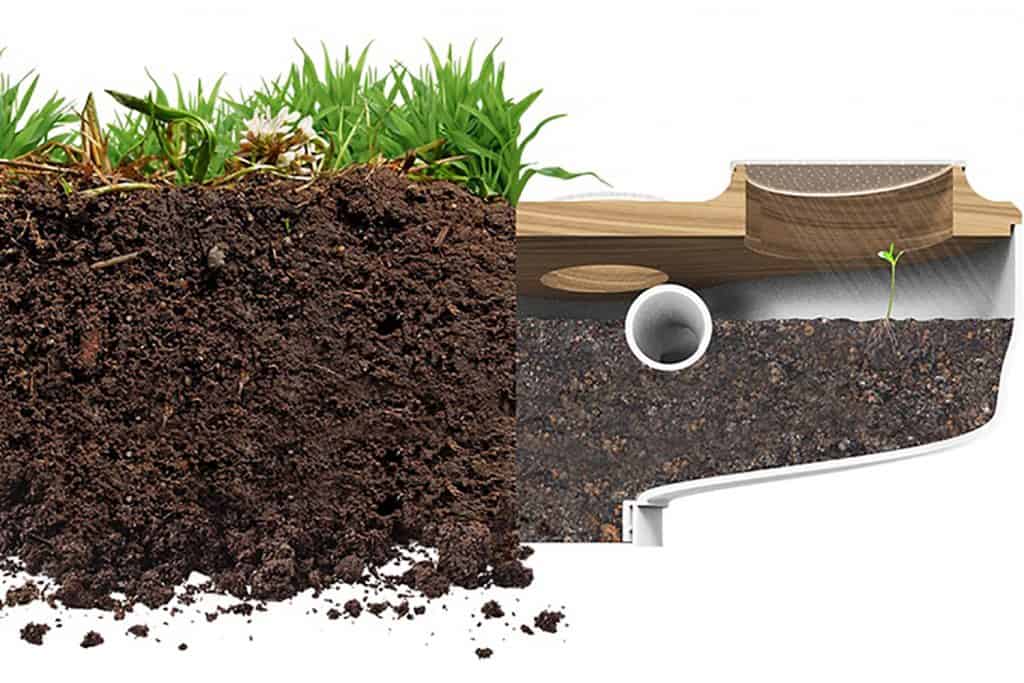
The two holes in the top are where where you can either add organic material to or retrieve soil from the vessel. Controlling moisture levels at each end, encourages the worms to move material from one side to the other. Basically they eat on one side and poop on the other. So it’s easy to know where to put the food waste, and where the rich soil can be harvested after decomposition.
Bionocraft recommends a mixture of humus and sawdust soil to get the compost started. The system is not good for citrus, processed foods, oils, fats, grains and meat, but works well with most other fruits and vegetables. It can also be used with grass, garden clippings, tea bags, brown paper, newspaper and leafy greens.
The design and size suits a typical 2-3 person household. And those with bigger families can either buy an extra one, or perhaps wait to see if one of their future projects is more suitable.
Up and Coming
In addition to the BIOVESSEL they also have some exciting projects in the pipeline, including one called the BIOVESSEL Pro.
This uses Mycelium, which will broaden the scope of what can effectively break down and compost. It will make it more viable for industrial institutions (such as cafe’s or restaurants). And will handle higher volumes as well as other waste products such as oil!
Another project in the works is the BIO-E which will generate electric power from food waste (compost). When we saw them in October 2016 they were looking to ship their products to their stakeholders in early 2017. They have completed their Mould for the biovessel which means and should be shipping to their kickstarter clients first, and later opening up to the public for purchases in the near future.
(The product is still available for pre-order from their website as of May 9th 2017 at a 15% discount)
The Biovessel will retail at about US$200. If you are interested you can find out more about their kickstarter here, (https://www.kickstarter.com/projects/1576257573/biovessel-an-ecosystem-powered-by-food-waste)
Update: The product is now available on Amazon – Bionicraft Biovessel
or
simply visit their homepage: https://www.bionicraft.com/
